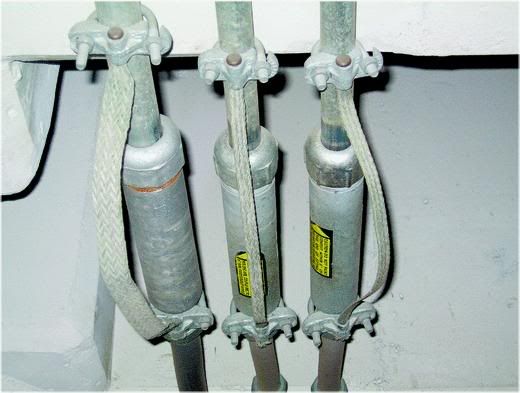- Location
- Lockport, IL
- Occupation
- Retired Electrical Engineer
I don?t understand this beast. Can someone give me an example of where it may reside?
Here?s my problem: Consider a simple, single phase, branch circuit. I run one black wire from the breaker terminals and connect it to one side of the load. I run one white wire from the neutral bar and connect it to the other side of the load. I run one green wire from the ground bar and connect it to the case of the load. That green wire is one long wire. It does not have ?two or more portions,? this phrase being taken from the article 100 definition of ?bonding jumper, equipment.?
So when does an EGC have ?two or more portions??
This question comes from a disagreement regarding the total number of wires to be run from the secondary of a transformer (480-120/208) to the distribution panel it serves, the correct name to be given to each wire, and the correct method of sizing each wire. Let?s ignore the phase wires, and talk only about wires that have the letters ?g-r-o-u-n-d? or ?b-o-n-d? or that include the word ?jumper.? I know it matters whether the N-G connection happens at the transformer or at the panel. In the case under discussion, it happens at the transformer.
Here?s my problem: Consider a simple, single phase, branch circuit. I run one black wire from the breaker terminals and connect it to one side of the load. I run one white wire from the neutral bar and connect it to the other side of the load. I run one green wire from the ground bar and connect it to the case of the load. That green wire is one long wire. It does not have ?two or more portions,? this phrase being taken from the article 100 definition of ?bonding jumper, equipment.?
So when does an EGC have ?two or more portions??
This question comes from a disagreement regarding the total number of wires to be run from the secondary of a transformer (480-120/208) to the distribution panel it serves, the correct name to be given to each wire, and the correct method of sizing each wire. Let?s ignore the phase wires, and talk only about wires that have the letters ?g-r-o-u-n-d? or ?b-o-n-d? or that include the word ?jumper.? I know it matters whether the N-G connection happens at the transformer or at the panel. In the case under discussion, it happens at the transformer.


